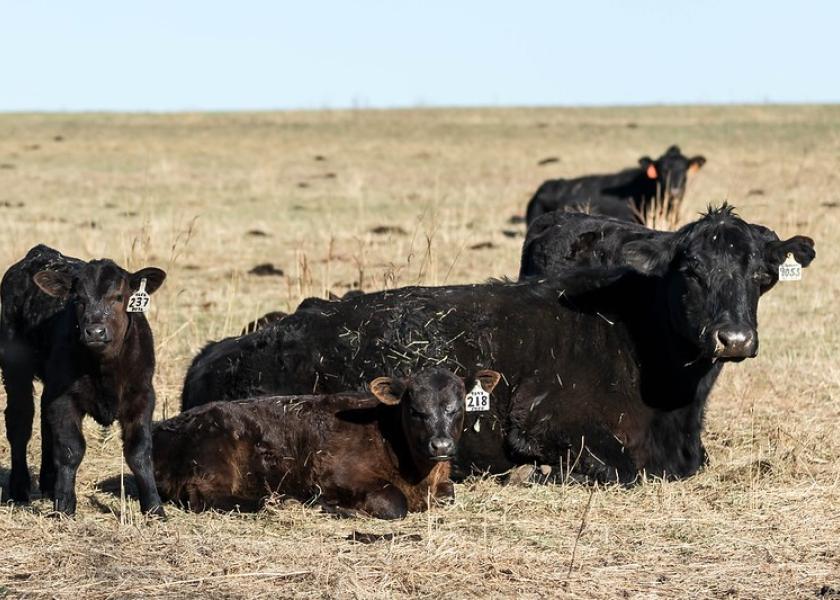Genetic Focus on Improving Beef Sustainability

Beef production system efficiency and sustainability are important aspects shaping the future of the beef industry. Genetic selection has long included traits on growth, carcass, and reproduction, but recently more focus has been placed on traits that impact efficiency and sustainability such as mature cow weight, maintenance energy, and methane emissions.
The most efficient and sustainable suite of genetic traits is not necessarily the same for all production environments. These components result in a complex web to navigate improvement in efficiency and sustainability moving forward. Let’s break down each component and look at it from a systems perspective.
The cow-calf sector has a disproportionate impact on system efficiency and sustainability due to the large amount of feed required to maintain a cow. Cow efficiency has been the topic of discussion for decades, and it is generally agreed that more moderate-sized cows will be more efficient because of less feed consumed per pound of calf-weaned, and more cows per acre increases ranch productivity. But small cows are not necessarily more efficient in all ranch environments, and calves from smaller cows are generally less efficient in the feedlot.
The majority of the improvements in efficiency and sustainability made in the beef industry over the last 4 decades have been due to increased meat produced per calf (i.e. cow maintained). Thus, moderating cow size, although improving efficiency in the cow-calf sector, could result in reduced efficiency and sustainability for the beef production system.
Matching the correct cow genetics with the production environment and utilizing genetic selection to develop maternal and terminal sire lines is more likely to result in optimized efficiency and sustainability in the entire beef production system.
Beyond herd average, selecting individuals that improve efficiency and sustainability is key to moving forward. Recent analyses indicate that improving feed efficiency and reducing maintenance energy requirements could have a large impact on sustainability; however, our ability to measure these in grazing animals and on large scale is lacking.
For the last two decades, feed efficiency has been measured in growing cattle and with the development of EPDs for feed intake and feed efficiency, genetic progress is being made. The problem is that feed efficiency in growing cattle fed moderate- to high-concentrate diets does not translate into feed efficiency in grazing mature cows. And, even though body size is an indicator of total feed required for maintenance, selecting cattle with lower maintenance requirements per pound of body weight is difficult and labor intensive.
Moving forward genomic EPDs will be critical to identify efficient cows on a large scale from the few phenotypes that will be able to be measured. Selecting cows of any body size with lower maintenance per pound of body weight will result in less feed to maintain body condition in cows and more feed available for growth in pre- and postweaning calves, which will greatly increase the efficiency and sustainability of the entire beef production system.
Recently, geneticists have begun to evaluate the heritability of methane emissions. Besides being a greenhouse gas, methane is a loss of energy during feed digestion resulting in lower feed efficiency. Methane emissions and feed intake and efficiency are strongly, but not perfectly, linked such that genetic selection for improved feed efficiency and reduced methane emissions could greatly increase efficiency and sustainability of beef production.
As with reducing maintenance energy requirements, reducing methane emissions per pound of feed results in increased feed nutrients absorbed by the animal for maintenance and growth. As genetic traits for methane become available, it is not just about reducing greenhouse gas emissions and climate change, but also about improving efficiency and profitability of raising beef cows and calves. Developing selection indices with both feed efficiency and methane emissions would likely result in cattle that are even more efficient.
Developing new genetic traits to reduce maintenance energy requirements, increase feed efficiency, and decrease methane emissions will move the industry toward a more sustainable future. With a focus on improved efficiency, genetic selection will improve environmental sustainability and ranch profitability.







